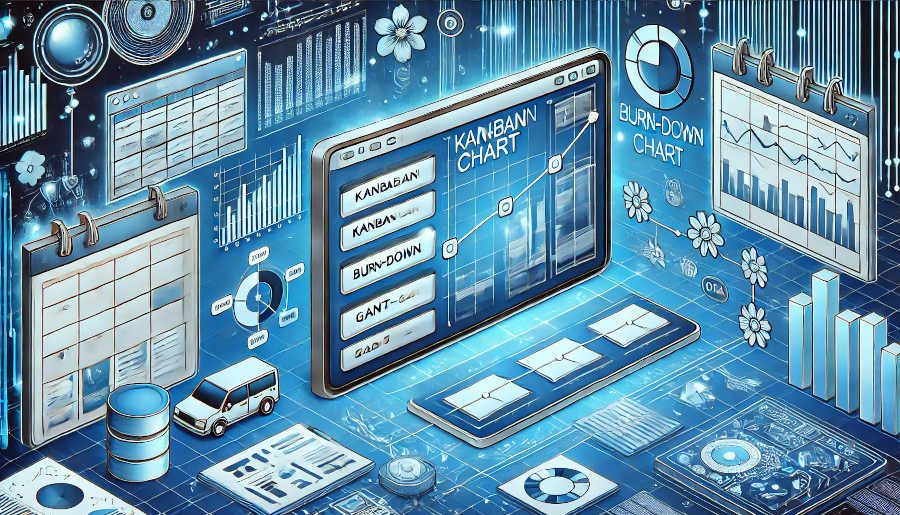Customer-Centricity
Customer-centricity is the bedrock of the IPD process. It involves understanding and anticipating the needs, preferences, and feedback of the end-users. This principle ensures that every stage of product development is guided by customer insights, making the final product more relevant and appealing. By placing the customer at the center of the development process, organizations can reduce the risk of developing products that do not resonate with the target audience. This approach not only enhances customer satisfaction but also fosters loyalty and long-term business growth.
Moreover, customer-centricity in IPD involves continuous feedback loops. These loops ensure that any changes or updates to the product are made based on real-time customer input. This iterative process allows for continuous improvement, ensuring that the product evolves in alignment with customer expectations. For instance, during the prototyping phase, customer feedback can be collected and analyzed to make necessary adjustments. This proactive approach to customer engagement ensures that the final product not only meets but exceeds customer expectations.
Furthermore, customer-centricity also entails a deep understanding of market trends and competitor offerings. By analyzing these factors, organizations can position their products more effectively in the market. This strategic understanding helps in creating unique value propositions that set the product apart from its competitors. In essence, customer-centricity in IPD is not just about meeting customer needs but about anticipating and exceeding them, thereby creating a sustainable competitive advantage.
Cross-Functional Collaboration
Cross-functional collaboration is another critical principle in the IPD process. It involves breaking down silos between different departments such as marketing, engineering, design, and finance, to work cohesively towards a common goal. This principle ensures that all aspects of product development are integrated and aligned, leading to a more efficient and effective process. By fostering collaboration, organizations can leverage the diverse expertise and perspectives of their teams, leading to more innovative and well-rounded products.
In practice, cross-functional collaboration in IPD often involves the creation of multidisciplinary teams. These teams work together from the initial concept phase through to market launch, ensuring that all perspectives are considered. For example, during the design phase, engineers, designers, and marketing experts can collaborate to ensure that the product is not only technically sound but also visually appealing and marketable. This collaborative approach reduces the likelihood of design flaws and ensures that the product is ready for market entry.
Moreover, cross-functional collaboration also enhances communication and reduces the risk of misunderstandings or misalignments. By working closely together, team members can quickly address any issues or challenges that arise, ensuring that the project stays on track. This collaborative environment also fosters a sense of ownership and accountability among team members, as they are all invested in the success of the product. In summary, cross-functional collaboration in IPD is not just about working together; it's about leveraging collective intelligence to create superior products.
Application in Real-World Scenarios
The principles of customer-centricity and cross-functional collaboration are not just theoretical but are applied in various real-world scenarios, demonstrating their effectiveness and importance. For instance, consider a technology company developing a new smartphone. By adopting a customer-centric approach, the company could conduct extensive market research to understand customer preferences for features such as battery life, camera quality, and user interface. This data would then guide the product development process, ensuring that the final product meets customer expectations.
In terms of cross-functional collaboration, the company could assemble a team comprising engineers, designers, marketers, and financial analysts. This team would work together to ensure that the smartphone is not only technologically advanced but also visually appealing, competitively priced, and well-marketed. For example, the marketing team could provide insights into consumer preferences, which the design team could then incorporate into the product's aesthetics. Similarly, the financial analysts could ensure that the pricing strategy aligns with market conditions and profitability goals.

Another example could be a healthcare company developing a new medical device. By focusing on customer-centricity, the company could engage with healthcare professionals and patients to understand their needs and challenges. This feedback could then be used to design a device that is not only effective but also user-friendly. In terms of cross-functional collaboration, the company could bring together engineers, medical experts, regulatory specialists, and marketing professionals. This team could work together to ensure that the device is safe, effective, and meets regulatory requirements, while also being marketable and accessible to its target audience.
In both scenarios, the application of customer-centricity and cross-functional collaboration results in products that are not only innovative but also market-ready and customer-focused. These principles ensure that the final product is well-rounded, addressing all critical aspects from design to market entry. By integrating these principles into their product development processes, organizations can achieve significant competitive advantages and long-term success.
Conclusion
In conclusion, the IPD process is deeply rooted in two core principles: customer-centricity and cross-functional collaboration. These principles are not just theoretical concepts but are integral to the practical aspects of product development, ensuring that the final product is both market-ready and customer-focused. Customer-centricity ensures that the product development process is guided by customer insights, reducing the risk of developing irrelevant products and enhancing customer satisfaction. Cross-functional collaboration, on the other hand, ensures that all aspects of product development are integrated and aligned, leading to more efficient and effective processes.
By adopting these principles, organizations can create products that not only meet but exceed customer expectations, fostering loyalty and long-term business growth. The real-world applications of these principles demonstrate their effectiveness, showcasing how they can be integrated into various industries to achieve significant competitive advantages. In essence, the IPD process, guided by customer-centricity and cross-functional collaboration, is a powerful methodology for bringing innovative and market-ready products to life.
FAQ
1.How does customer-centricity benefit the product development process?
Customer-centricity ensures that the product development process is guided by real customer needs and preferences. This approach reduces the risk of developing products that do not resonate with the target audience, enhancing customer satisfaction and loyalty. By continuously gathering and analyzing customer feedback, organizations can make iterative improvements, ensuring that the final product meets and exceeds customer expectations.
2.Why is cross-functional collaboration important in IPD?
Cross-functional collaboration breaks down silos between different departments, ensuring that all aspects of product development are integrated and aligned. This collaborative approach leverages the diverse expertise and perspectives of various teams, leading to more innovative and well-rounded products. It also enhances communication and reduces the risk of misunderstandings, ensuring that the project stays on track and that all critical aspects are addressed.
3.Can the principles of customer-centricity and cross-functional collaboration be applied in non-tech industries?
Absolutely. These principles are universally applicable and can be integrated into various industries, including healthcare, finance, and consumer goods. For instance, in healthcare, customer-centricity involves understanding the needs of healthcare professionals and patients, while cross-functional collaboration ensures that the product is safe, effective, and meets regulatory requirements. By adopting these principles, organizations in any industry can achieve significant competitive advantages and long-term success.
ARTICLE TITLE :2 core principles in IPD process and their application ,AUTHOR :ITpmlib

















